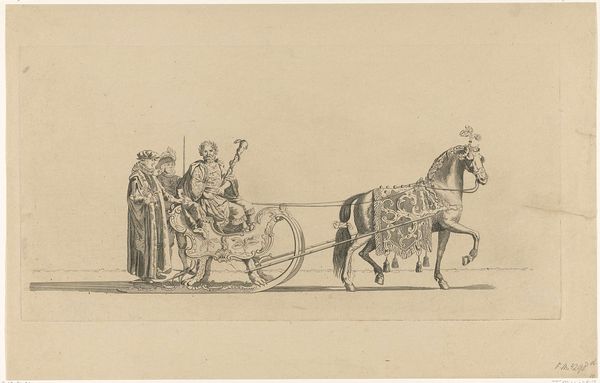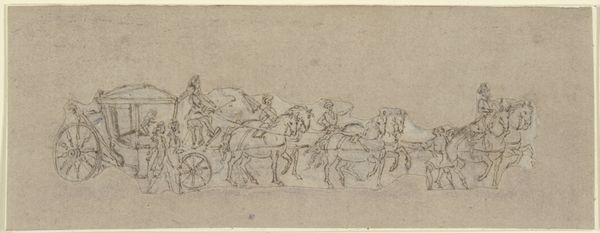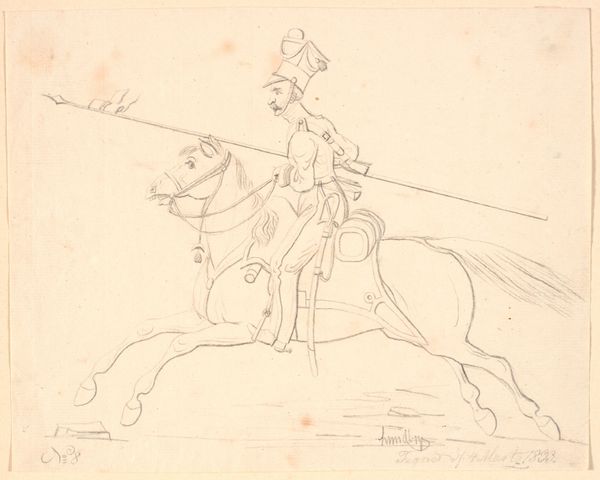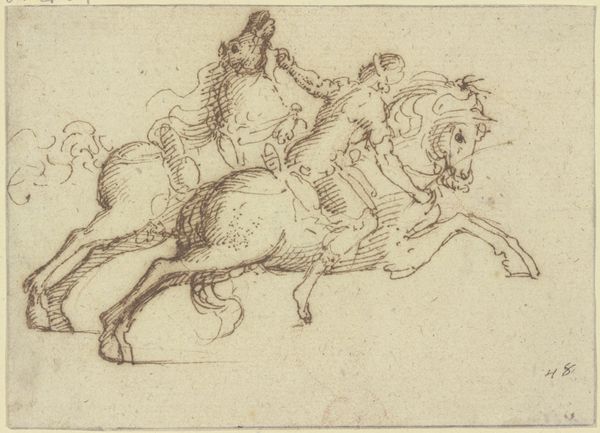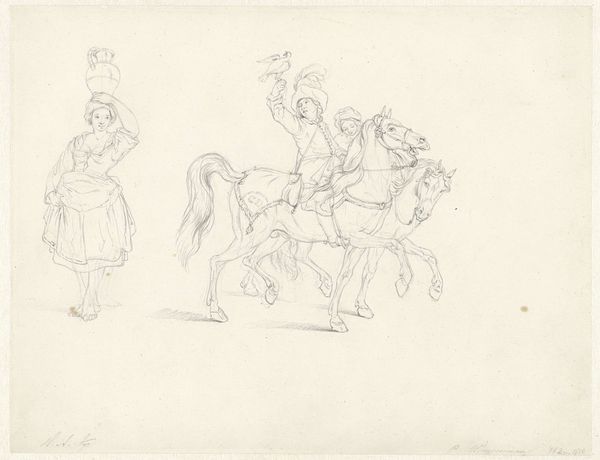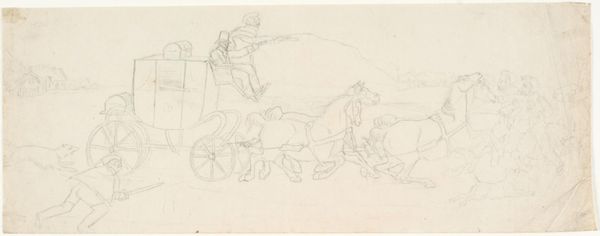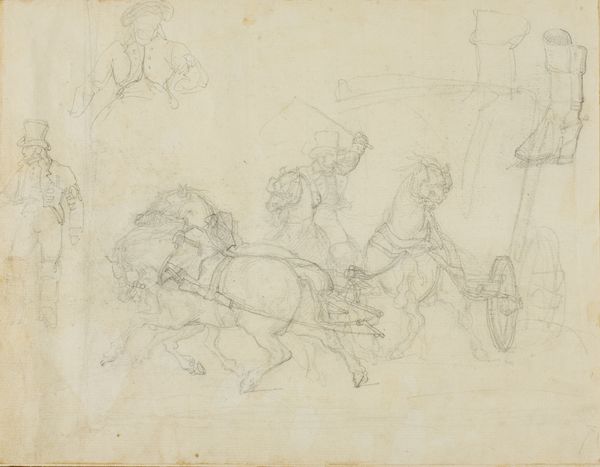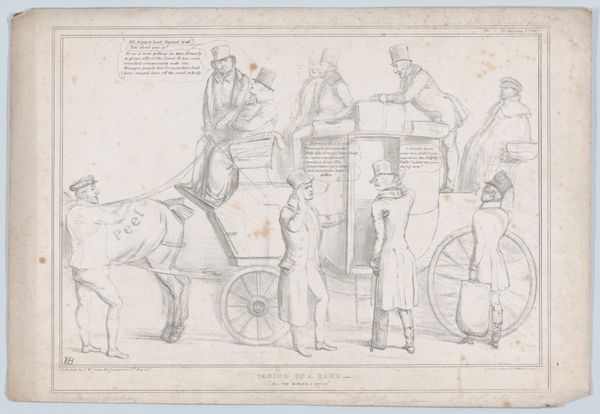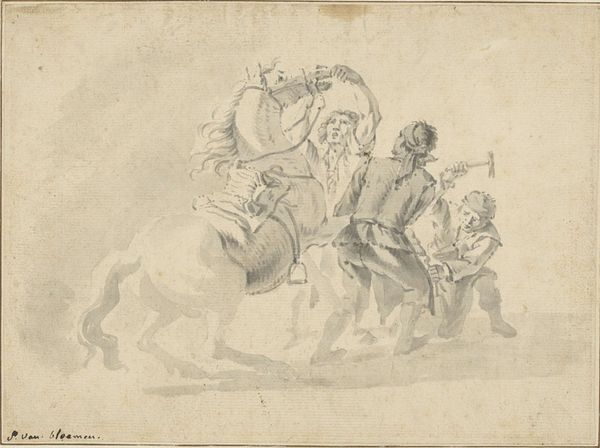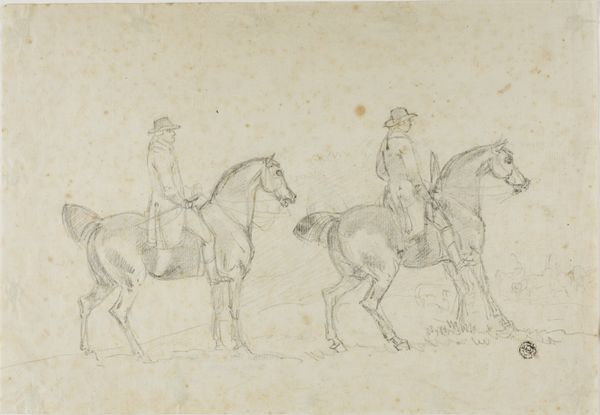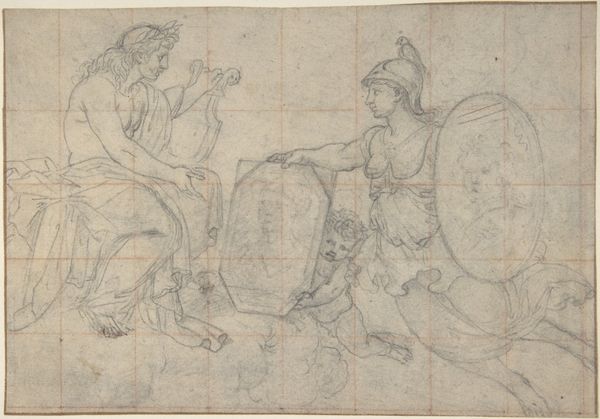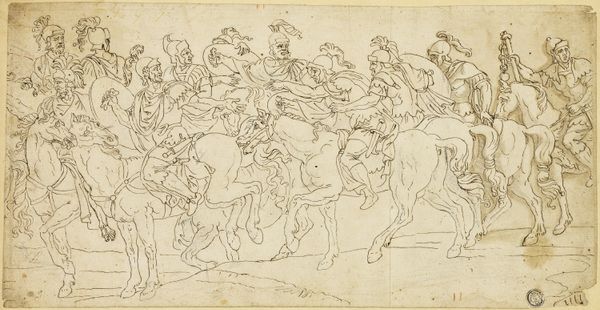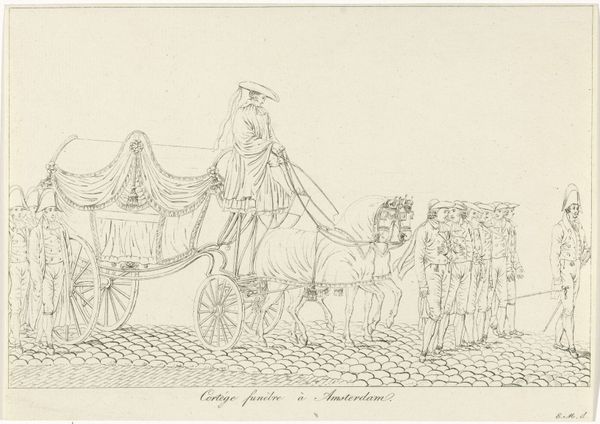
Composition from the Tragedies of Aeschylus, plate 17 (recto); Goddess Statue from the Suppliants, plate 7 (verso) 19th century
0:00
0:00
drawing, print, paper, pencil
#
drawing
#
neoclassicism
# print
#
pen sketch
#
landscape
#
figuration
#
paper
#
ancient-mediterranean
#
pencil
#
history-painting
Dimensions: Sheet: 10 3/8 × 15 11/16 in. (26.3 × 39.8 cm)
Copyright: Public Domain
This drawing, "Composition from the Tragedies of Aeschylus," was created by John Flaxman around 1795, with graphite on paper. The linear composition evokes the structured, processional quality of classical friezes, immediately establishing a sense of order and formality. The artist uses sparse lines to define the figures, chariot, and horses, emphasizing clarity and restraint. This echoes a structuralist approach, reducing the narrative to its essential components. The figures, rendered with minimal shading, appear almost as archetypes, embodying universal roles rather than individual identities. Flaxman's work here can be interpreted as engaging with the semiotic representation, where each element signifies a broader cultural or philosophical concept. The scene becomes less about a specific event and more about the underlying structures of tragedy and human experience. In its formal simplicity, the drawing suggests a quest for a more profound understanding of human experience through the lens of classical tragedy. The piece becomes not merely an illustration but a structural analysis of the genre itself, exploring how meaning is constructed through form and representation.
Comments
No comments
Be the first to comment and join the conversation on the ultimate creative platform.
